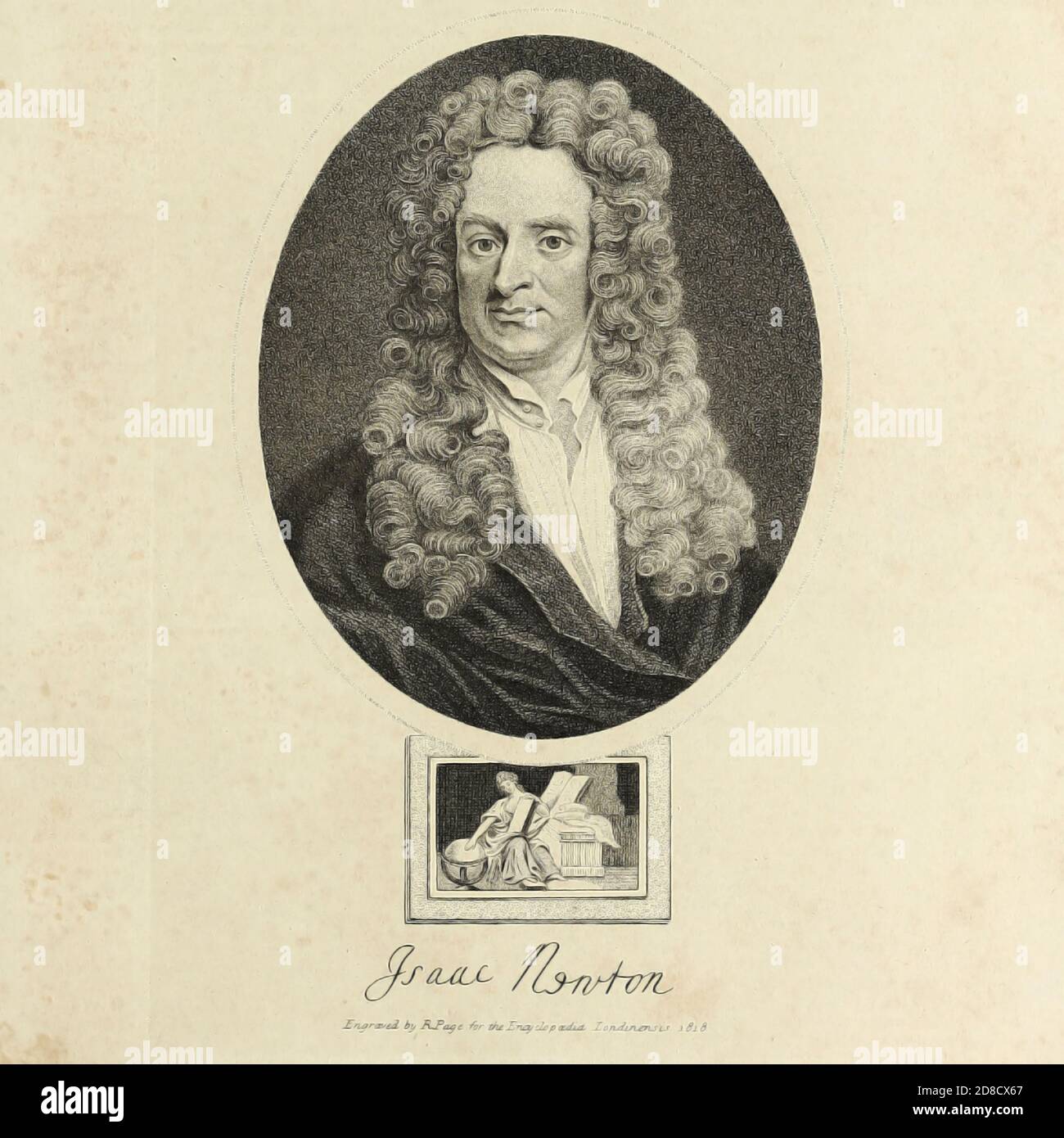Portrait of Sir Isaac Newton, English physicist, mathematician, astronomer, philosopher. Newton's (1643-1727) discoveries were prolific and exerted a huge influence on science and thought. His theories of gravity and his three laws of motion were outlined in his greatest work, Philosophiae Naturalis Principia Mathematica, (1687) and he is credited with discovering differential calculus. He also formulated theories regarding optics and the nature of light that led to him building the first reflecting telescope. Knighted by Queen Anne in 1705, Newton is buried in Westminster Abbey, London. Coppe

Image details
Contributor:
Historic Illustrations / Alamy Stock PhotoImage ID:
2D8CX67File size:
50.5 MB (1.2 MB Compressed download)Releases:
Model - no | Property - noDo I need a release?Dimensions:
4200 x 4200 px | 35.6 x 35.6 cm | 14 x 14 inches | 300dpiDate taken:
16 January 2020Location:
LondonMore information:
This image is a public domain image, which means either that copyright has expired in the image or the copyright holder has waived their copyright. Alamy charges you a fee for access to the high resolution copy of the image.
This image could have imperfections as it’s either historical or reportage.
Portrait of Sir Isaac Newton, English physicist, mathematician, astronomer, philosopher. Newton's (1643-1727) discoveries were prolific and exerted a huge influence on science and thought. His theories of gravity and his three laws of motion were outlined in his greatest work, Philosophiae Naturalis Principia Mathematica, (1687) and he is credited with discovering differential calculus. He also formulated theories regarding optics and the nature of light that led to him building the first reflecting telescope. Knighted by Queen Anne in 1705, Newton is buried in Westminster Abbey, London. Copperplate engraving From the Encyclopaedia Londinensis or, Universal dictionary of arts, sciences, and literature; Volume XVII; Edited by Wilkes, John. Published in London in 1820